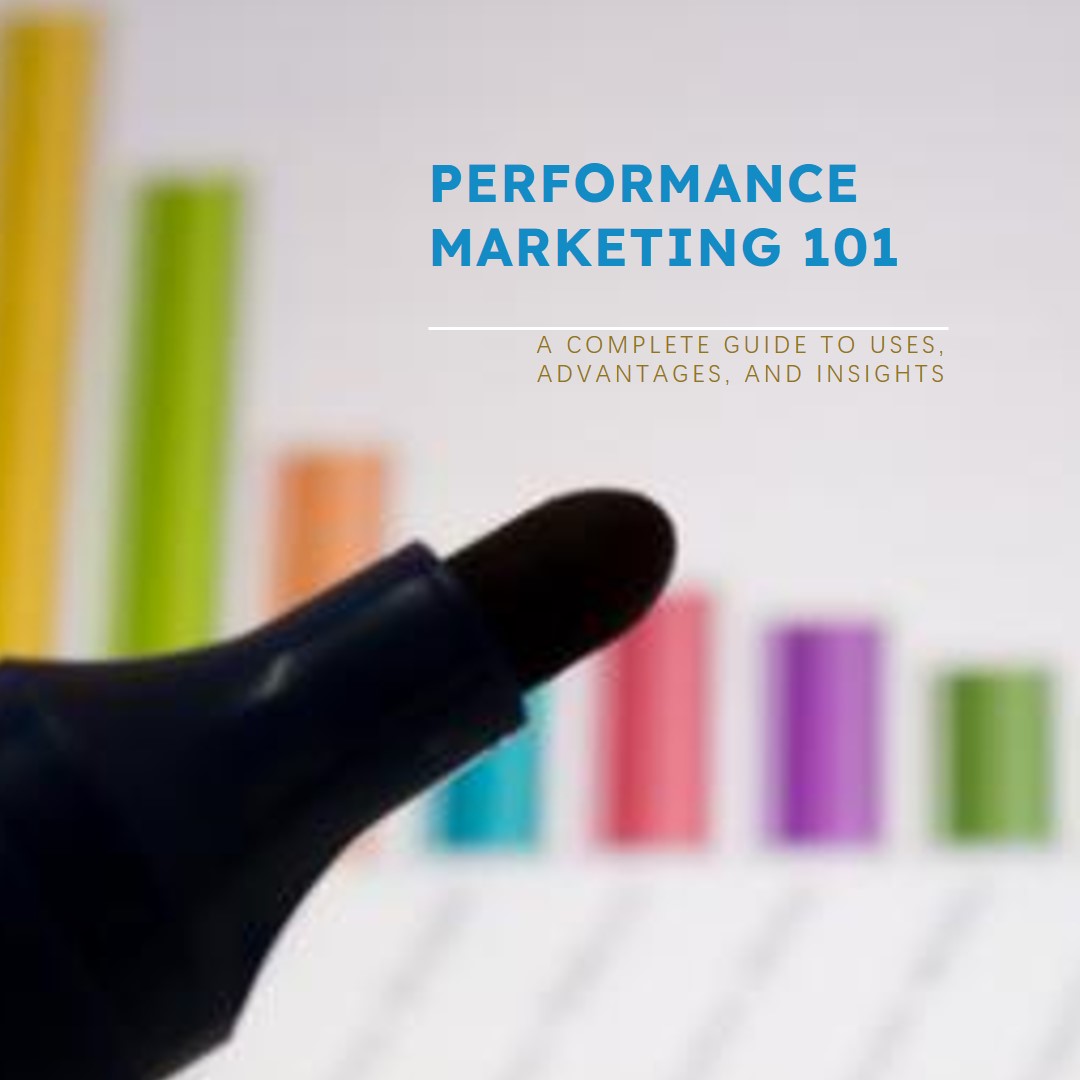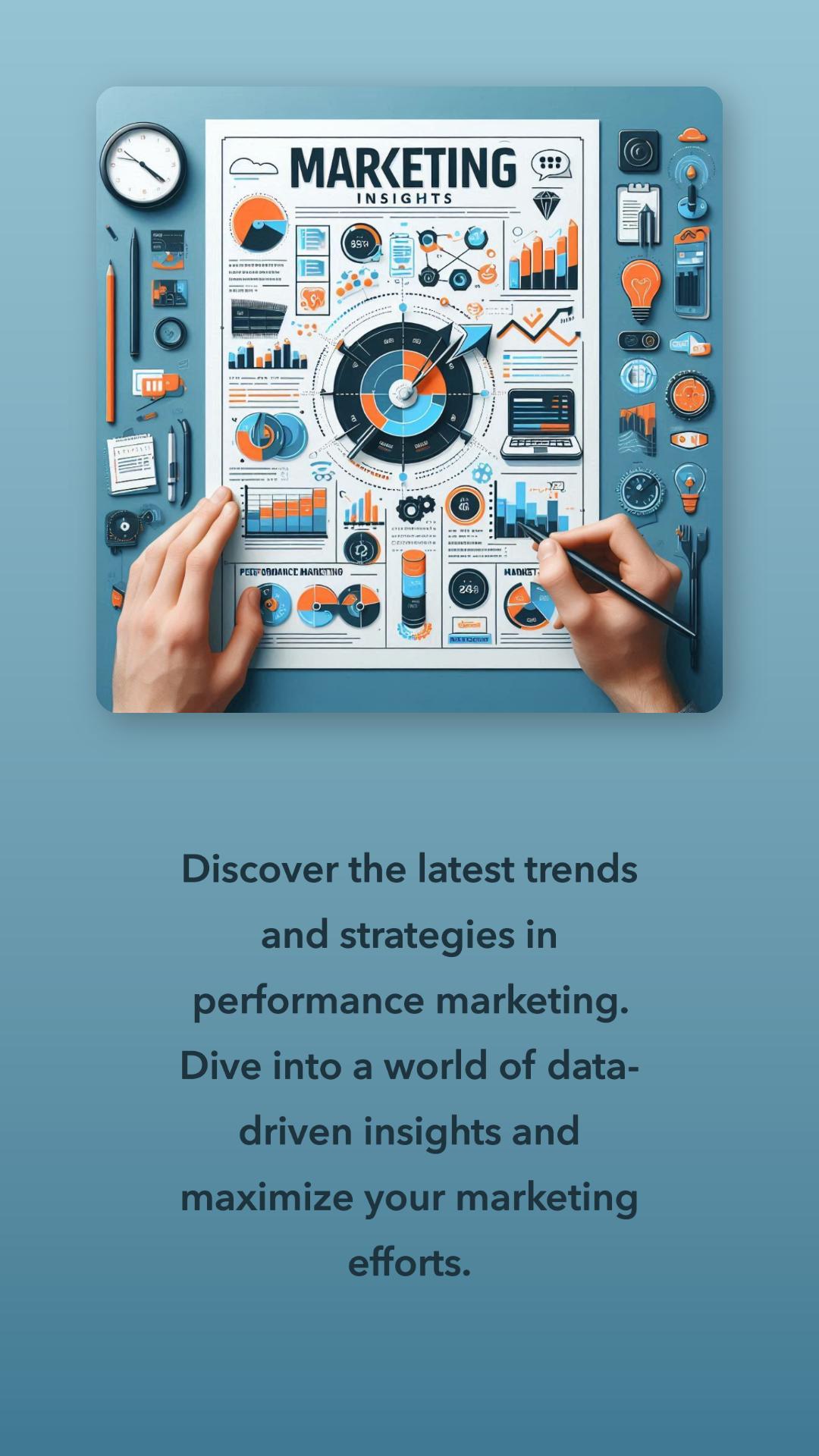A Complete Guide to Performance Marketing: Uses, Advantages, and Expert Insights
What is Performance Marketing?
Performance marketing is a results-driven digital marketing strategy that focuses on paying for specific actions, such as clicks, leads, or sales, rather than for impressions or reach. This approach allows advertisers to optimize their marketing spend by targeting the most effective channels and tactics.
Key Components of Performance Marketing
1. Affiliate Marketing
Affiliate marketing involves partnering with affiliates (individuals or companies) who promote your products or services in exchange for a commission on each sale or lead generated. This model is highly effective for businesses looking to expand their reach without upfront advertising costs.
2. Search Engine Marketing (SEM)
Search Engine Marketing, often referred to as pay-per-click (PPC) advertising, involves placing ads on search engines like Google and Bing. Advertisers bid on keywords relevant to their business, and they pay only when someone clicks on their ad. This makes SEM a cost-effective way to drive targeted traffic to your website.

3. Social Media Advertising
Social media platforms like Facebook, Instagram, and LinkedIn offer performance-based advertising options where businesses pay for specific actions, such as clicks, likes, shares, or conversions. These platforms provide advanced targeting options, allowing advertisers to reach highly specific audiences.
4. Display Advertising
Display advertising involves placing banner ads on websites across the internet. Performance-based display advertising focuses on paying for clicks or conversions rather than impressions, making it a more efficient use of marketing budgets.
5. Native Advertising
Native advertising refers to ads that blend in with the content of the platform on which they appear, such as sponsored articles or promoted posts. Performance-based native advertising ensures that advertisers pay only when users engage with the content.
How Performance Marketing Works
1. Setting Clear Goals
The first step in any performance marketing campaign is to set clear, measurable goals. These goals could include increasing website traffic, generating leads, boosting sales, or improving customer retention. The more specific the goals, the easier it is to measure success.
2. Choosing the Right Channels
Not all channels are suitable for every business. The key is to identify which platforms your target audience frequents and which type of ads they are most likely to engage with. This could be search engines, social media, affiliate networks, or other digital platforms.
3. Creating Compelling Ads
The effectiveness of a performance marketing campaign largely depends on the quality of the ads. Ads should be visually appealing, have a clear call-to-action, and be relevant to the audience. Testing different versions of ads (A/B testing) can help identify the most effective creatives.
4. Tracking and Optimization
One of the biggest advantages of performance marketing is the ability to track and analyze every aspect of the campaign. By using tools like Google Analytics, Facebook Ads Manager, or third-party software, marketers can monitor performance in real-time and make adjustments to optimize results.
The Advantages of Performance Marketing
1. Cost Efficiency
One of the primary benefits of performance marketing is its cost efficiency. Since advertisers only pay for specific actions, they can ensure that their marketing budget is being spent effectively. This is in contrast to traditional advertising models, where businesses might pay for ad placements without any guarantee of results.

2. Measurable Results
Performance marketing provides clear, measurable results. Whether it’s the number of clicks, leads, or sales, businesses can easily track the return on investment (ROI) of their campaigns. This transparency allows for better decision-making and more effective allocation of resources.
3. Flexibility and Scalability
Performance marketing campaigns are highly flexible and can be adjusted on the fly based on performance data. If a particular ad or channel isn’t performing well, it can be paused or modified without wasting additional budget. Additionally, successful campaigns can be scaled up to reach a larger audience. Do visit news blog website for more content.
4. Targeted Reach
Performance marketing allows businesses to target specific audiences based on demographics, interests, behavior, and more. This targeted approach ensures that ads are shown to people who are most likely to be interested in the product or service, increasing the chances of conversion.
5. Risk Management
Since payment is tied to performance, there is a lower risk associated with performance marketing compared to traditional advertising. Businesses are not paying upfront for ad placements; instead, they only pay when they achieve the desired outcome, reducing the financial risk.
Real-World Examples of Performance Marketing Success
Example 1: Amazon Affiliate Program
Amazon’s affiliate program is one of the most well-known examples of performance marketing. Affiliates promote Amazon products on their websites, blogs, or social media channels, earning a commission for each sale generated through their referral links. This program has allowed Amazon to expand its reach significantly without the need for extensive advertising.
Example 2: Google Ads
Google Ads is a prime example of search engine marketing (SEM) in action. Businesses of all sizes use Google Ads to bid on keywords relevant to their products or services. They pay only when someone clicks on their ad, making it a cost-effective way to drive targeted traffic to their websites. Many companies have seen substantial growth by leveraging Google Ads to reach potential customers actively searching for their offerings.

Example 3: Facebook Ads
Facebook Ads have become a cornerstone of social media advertising for many businesses. By using Facebook’s advanced targeting options, companies can create highly personalized ads that resonate with their target audience. For example, an e-commerce store might use Facebook Ads to retarget users who have visited their website but haven’t made a purchase, offering them a discount to encourage conversion.
Example 4: Airbnb’s Use of Display Advertising
Airbnb has effectively used display advertising to attract new hosts and travelers. By placing targeted banner ads on travel-related websites, Airbnb was able to reach a large audience of potential users. They optimized their campaigns by paying only for clicks, ensuring that their budget was spent on users who were genuinely interested in their platform.
Example 5: BuzzFeed’s Native Advertising
BuzzFeed is a leader in native advertising, seamlessly integrating sponsored content into its platform. Brands collaborate with BuzzFeed to create engaging, shareable content that promotes their products or services. BuzzFeed’s performance-based approach ensures that advertisers only pay when users engage with the content, making it a highly effective form of advertising.
Insights and Data-Driven Strategies in Performance Marketing
Insight 1: The Growing Importance of Mobile
With more people using mobile devices to browse the internet and shop online, mobile performance marketing has become increasingly important. According to recent data, over 70% of digital ad spending is now directed towards mobile, highlighting the need for mobile-optimized campaigns.

Insight 2: The Power of Data Analytics
Data is at the heart of performance marketing. By analyzing data from various sources, such as customer behavior, website analytics, and social media interactions, businesses can gain valuable insights into what drives conversions. This data-driven approach allows for more precise targeting, better ad creatives, and ultimately, higher ROI.
Insight 3: The Role of Artificial Intelligence
Artificial intelligence (AI) is playing a growing role in performance marketing. AI-powered tools can analyze vast amounts of data to predict customer behavior, optimize ad placements, and even create personalized ad content. This allows marketers to achieve better results with less manual effort.
Insight 4: The Shift Towards Omnichannel Marketing
As consumers interact with brands across multiple channels, there is a growing need for an omnichannel approach to performance marketing. This means creating cohesive campaigns that provide a seamless experience across all touchpoints, from social media and search engines to email and display ads. Businesses that successfully implement omnichannel strategies can expect to see higher engagement and conversion rates.
Insight 5: The Impact of Privacy Regulations
With the introduction of privacy regulations like GDPR and CCPA, performance marketers need to be more mindful of how they collect and use data. These regulations have led to a greater emphasis on transparency and consent, as well as a shift towards first-party data. Marketers who adapt to these changes can build stronger, more trusted relationships with their audiences.
Conclusion
Performance marketing is a powerful tool for businesses looking to maximize their marketing efforts and achieve measurable results. By focusing on specific actions and outcomes, companies can ensure that their marketing budgets are spent efficiently and effectively. Whether through affiliate marketing, SEM, social media advertising, or other channels, performance marketing offers a flexible, scalable, and data-driven approach to digital advertising.

In an increasingly competitive digital landscape, the ability to track, analyze, and optimize marketing campaigns in real time is invaluable. As technology continues to evolve, so too will the strategies and tools available to performance marketers. By staying ahead of these trends and continuously refining their approaches, businesses can maintain a competitive edge and drive sustained growth.

